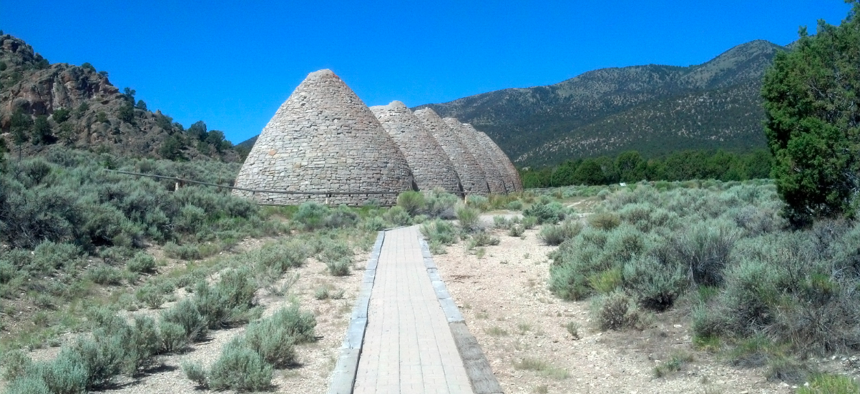When the Honors System Short-Changes State Parks

The Ward Charcoal Ovens State Historic Park near Ely, Nevada Michael Grass
An audit found that one-third of park visitors in this state didn’t pay an entrance fee.
Outside the entrances to many state parks and historic sites across the United States, you’ll see a sign that says “Entering Fee Area.” But that doesn’t mean that everyone visiting will actually pay. For those who didn’t secure a parks pass ahead of time, there’s normally a box adjacent to the parking lot with envelopes where you write in your license plate number, put in the required money, and remove the perforated receipt, which then goes on your dashboard. Once the envelope is sealed with the payment, you drop it in the box.
It’s a cumbersome process, but for state governments looking to save on personnel costs, eliminating staffed fee stations and shifting to self-pay models has been a common cost-cutting tactic.
In theory, there’s enforcement with the honors system. But for many particularly remote state parks—say, the Ward Charcoal Ovens State Historic Site near Ely, Nevada—the risk of actual enforcement is incredibly low.
The Ward Charcoal Ovens consist of a well-preserved cluster of beehive-shaped masonry ovens from the 1870s, a time when silver ore mined nearby was processed. It’s a cool spot—this Route Fifty correspondent has been there—which requires driving many miles down a desolate gravel road that itself connects to U.S. Highway 50, aka the Loneliest Road in America. There’s no staffed entrance point to collect the day-use fee, so for the Ward Charcoal Ovens, the Nevada Division of State Parks relies mostly on the honors system.
So what are the fiscal impacts of state park visitors who casually disregard the day-use payment?
A recently released state audit in Nevada shows that nearly one-third of the 3.5 million people who visited a state park in 2017 didn’t pay the required entrance fees. That’s adds up to $1.2 million in uncollected revenue for the state parks. And that’s likely a conservative estimate.
According to The Nevada Independent:
Auditors found that parks with manned entrances, such as Valley of Fire state park, had a better compliance rate than those with self-pay stations, where auditors said visitors through either “ignorance or willful intent” failed to pay required entrance fees.
Although nine parks had an “estimated compliance” of 90 percent or higher, the audit found several parks with a significantly small percentage of collected entrance fees compared to vehicle traffic, including Cave Rock park at Lake Tahoe, with an estimated 23 percent “compliance” percentage, losing out on more than $137,800 in expected revenue based on annual vehicle count.
Despite their isolation and temptation to abuse the honors system, the estimated fee-payment compliance rate for Ward Charcoal Ovens in 85 percent, according to the audit.
Michael Grass is Executive Editor of Government Executive’s Route Fifty and is based in Seattle.
NEXT STORY: Investing in Your Employees' Best Ideas






